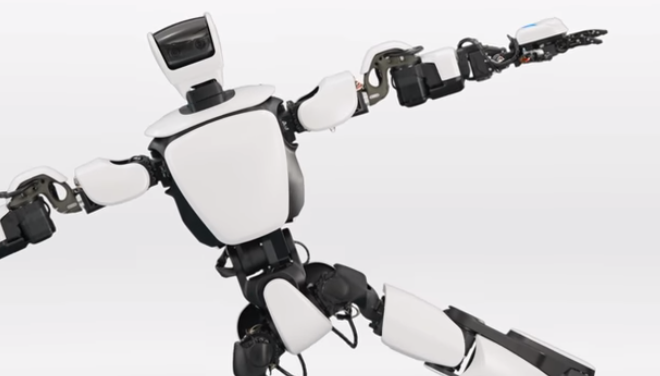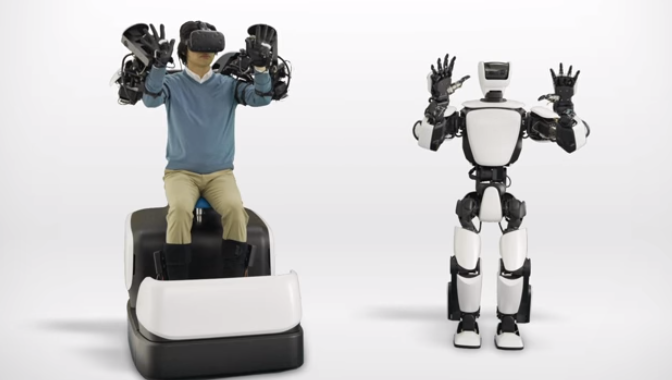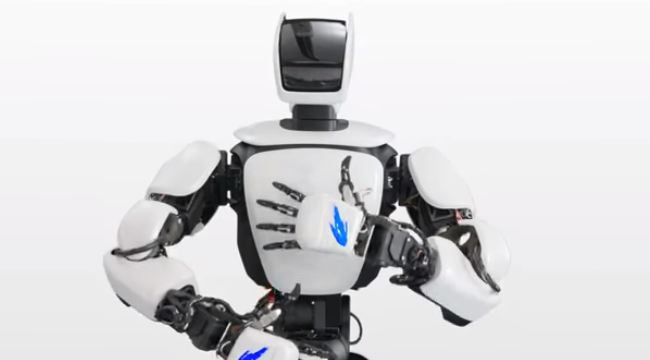
This article is produced by NetEase Smart Studio (public number smartman 163). Focus on AI and read the next big era!
[NetEase Smart News Dec. 12 news] Let's imagine a robot, and then it is very likely that you just conceived its image based on your basic impression of the robot - a glossy metal surface or a chrome-white bionic robot. However, the vast majority of robots around us are not. Instead, they were designed specifically for specific tasks. Our cultural concept of the beginning of robotics can be traced back to the concept of creating robots in "Roseau's Universal Workers". In essence, the original designer's idea was to make the robot design a synthetic human model.
The concept of a bionic robot is very novel. People have been working hard to create robots that appear to exist only in science fiction. Recently, a veteran competitor in this field, Toyota Motor, returned to our sights with a new model they produced, and released its own company's product named "T-HR3." Like a bionic robot, it looks very clever and has a good grip. It can make actions that are very similar to humans.
This bionic robot is mainly controlled by remote control. The remote control system allows users to exert different degrees of pressure on an algorithm framework to control the robot's limbs. The VR head-mounted device makes it more three-dimensional, and the user can remotely control the body of the robot. There is no news about the sale price of this bionic robot, but it is clear that a robot with a complex control system will not appear on their Christmas shopping list unless you are a billionaire.
Toyota Motor Corp. is no stranger to robotics. They have released a series of "robot partners." These robots have a strange affinity with instrumentation, but they are rarely seen doing other things. Given that their products do not seem to have more capabilities than the automatic devices designed by Leonardo da Vinci hundreds of years ago, these robots soon disappeared. As the name implies, T-HR3 is a continuation of these robots. It appeared shortly after ASIMO 2003, and it seems to be much more human-like.

Toyota's HSR-2 robot has a slightly weaker bionic effect (perhaps better for the robot itself). It is a robot with a wheel base and a simple mechanical arm. This reminds us of the early humanoid robot, PR-2, produced by DreamWorks, Willow Garage. The concept of this cheap robot is very successful. It can simply use the body's wheels to move around and pick up objects. It doesn't hide too much attention to do other dangerous things, so we can say it is very A successful product.
Therefore, when Toyota participated in the Robot World Cup and the International Robot Competition to find a good competitive condition for their housekeeper robots, they chose HSR-2 to assist it in grasping objects. HSR-2 has been put into trial operation, which includes experiments to care for the elderly and injured, but it has not been widely adopted after 5 years of publication. It can be said that the most successful multi-purpose humanoid robot is not a real bionic robot. It is intriguing that ten years after giving up this project, Toyota now seems to want to return to more humanoid robots.
What is not yet clear is that, like a bionic robot, to be exact, T-HR3 is true. People can solve complex control problems by simply remotely operating the robot. Then, human beings can deal with all the problems including: sensory perception, decision-making, planning and manipulation, which were originally the most difficult problems for robots.
T-HR3 may not have a lot of autonomy, but letting it sacrifice autonomy greatly weakens its use. Because it can't act alone, you need a remote control system to control this bionic robot to get results, and it's not accurate, and doing the same work is much more expensive than assigning to humans. Perhaps one day robots will have more autonomy, and instead may only allow humans to control its master control system in the event of a robot failure.
Toyota’s statement called it “a robotic system platform capable of helping people safely in a variety of environments, such as homes, medical facilities, construction sites, disaster areas, and even outer space. It can play a useful role. "In reality, it is very difficult for us to see similarly versatile robots (unless it is much more powerful than humans). Similarly, if it is deployed in the disaster area or in outer space, it seems that the function is not stable enough. These tasks for robots have been proposed for a long time, but few people can use examples to prove that this challenge can be accomplished.

On the contrary, this robot seems to be designed to work with humans. Its height of 1.5 meters, weight of 75 kilograms, and a body with 32 degrees of freedom all indicate that it was designed as a prototype for humans, not as a robot as ATLAS is strong enough to be used on the battlefield. In this case, it may be closer to the cooperative or collaborative robot model developed by Rethink Robotics technology. It will have higher security features, including forced sensitive feedback to users, and reduce the risk of similar killer robots. Sex and bad social issues.
On the contrary, the design of this kind of bionic robot focuses on the precise engineering technology: in the propaganda video, it can be seen that the robot can use one leg to balance, and then pose some self-possessed, yoga-like poses. This may mean that Toyota had previously tried to help care for the elderly robots, may be more likely than deployed to the disaster area. This is also the best way for them to complete the set goals for HSR-2.
The reason why humanoid robots are so elusive and so attractive is probably because of our simple misunderstandings. We made two bad assumptions. First of all, we assume that if you build a bionic robot, give its joints enough flexibility, and add some artificial intelligence, or some pre-set behavior, then it will be able to do all human beings can do. When you see a robot that moves to look a lot like humans, it seems that the most difficult part has already been completed. Then we believe that this robot can accomplish anything that humans can do, but the reality can never be simply summarized.

We will also make the contrary assumption: We think that when we are finally replaced, our body and brain will be perfectly replicated to complete all the functions that we have been able to accomplish in the past. Perhaps in reality, the future of robotics and artificial intelligence is more like what they are now: gradually, machines with specialized algorithms and learning devices will transcend humanity in what we know and don’t need humans to prove it. at this point.
In the future, T-HR3 may try to use the concept of machine learning as a platform for future research. It will gradually learn from the human controller, and it is not willing to become just an all-around robot that is taken out of the box. In this way, you can see that this platform is used to explore the limits of what humans can teach robots to do, so long as they are allowed to imitate our body's sequence of actions, just like the use of neural networks, they can pass the test training. The algorithm reaches the limit of the data. There is not a single machine that can do everything humans can do, but in the future they will far exceed us in anything humans want to do.
Therefore, when you see a new type of bionic robot like Toyota, you can immerse yourself in its technical execution capabilities. This is not only a publicity gimmick, but also a revolutionary progress. Remember that we are now getting closer and closer to achieving the goal of creating human-level robots.
(From: SingularityHub Compilation: NetEase See Compilation Robot Reviewer: Fu Zeng)
Pay attention to NetEase smart public number (smartman163), obtain the latest report of artificial intelligence industry.
Electrical Polyester Nonwoven Fabric
Electrical Polyester Nonwoven Fabric,Polyester Nonwoven Fabric,Polyester Spunbond Nonwoven Fabric,Spunbond Polyester Fabric
Longkou Libo Insulating Material Co.,Ltd. , https://www.liboinsulation.com